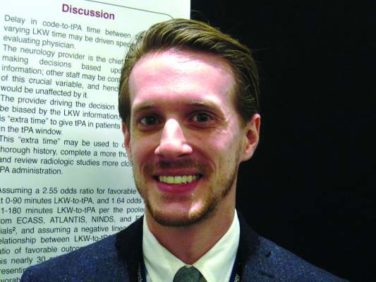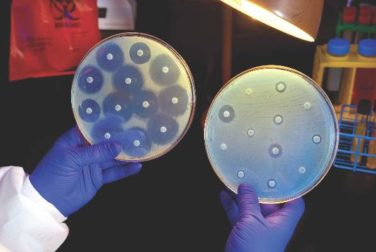FROM THE COCHRANE DATABASE OF SYSTEMATIC REVIEWS
There is limited evidence in favor of permanent transvaginal mesh or grafts over native tissue repair for vaginal prolapse, according to a systematic review of 37 randomized controlled trials.
Researchers reviewed trials involving 4,023 women comparing transvaginal grafts with traditional native tissue repair for vaginal prolapse. They found that permanent mesh repair was associated with a 34% lower likelihood of awareness of prolapse at 1-3 years after the procedure (risk ratio, 0.66) and a 60% lower likelihood of recurrent prolapse on examination (RR, 0.40), compared with native tissue repair, according to a paper published online Feb. 9 ( Cochrane Database Syst Rev. doi: 10.1002/14651858.CD012079 ).
Women who underwent permanent mesh repair also had 47% lower rates of repeat surgery for prolapse than those who had native tissue repair (RR, 0.53), although neither approach achieved a significant difference in rates of repeat surgery for continence.
Overall, more than twice as many women in the mesh group needed repeat surgery for a combined outcome of prolapse, stress incontinence, or mesh exposure (RR, 2.40).
“This suggests that if 5% of women require repeat surgery after native tissue repair, between 7% and 18% in the permanent mesh group will do so,” wrote Dr. Christopher Maher of the Royal Brisbane and Women’s Hospital, Australia, and his coauthors.
However permanent mesh was also associated with 39% higher rates of de novo stress incontinence (RR, 1.39) and nearly a four-fold greater risk of bladder injury (RR, 3.92), compared with native tissue repair. There were no differences between the groups in rates of de novo dyspareunia and the researchers could not determine the impact on quality of life due to very low-quality evidence.
The researchers also examined the relative impact of absorbable mesh, compared with native tissue repair and, while the evidence for the effectiveness of either at 2 years was found to be of very low quality, the risk of recurrent prolapse on examination was 29% lower with the absorbable mesh group, compared with native tissue repair.
Similarly, studies comparing biological graft with native tissue repair were of low quality and found no evidence of a significant difference in the impact on the risk of recurrent prolapse or repeat surgery for prolapse.
Given the higher rates of repeat surgery for prolapse, stress urinary incontinence, mesh exposure, as well as higher rates of bladder injury at surgery and de novo stress incontinence, the review authors commented that the risk-benefit profile of transvaginal mesh suggested it had limited utility in primary surgery.
“While it is possible that in women with higher risk of recurrence the benefits may outweigh the risks, there is currently no evidence to support this position,” the authors wrote.
Overall, the quality of study evidence ranged from very low to moderate, with the main limitations being poor reporting of study methods, inconsistency, and imprecision.
“In 2011, many transvaginal permanent meshes were voluntarily withdrawn from the market, and the newer, lightweight transvaginal permanent meshes still available have not been evaluated within a randomized controlled trial,” the authors wrote. “In the meantime, these newer transvaginal meshes should be utilised under the discretion of the ethics committee.”
Dr. Maher reported involvement in two trials of pelvic prolapse. There were no other conflicts of interest reported.





